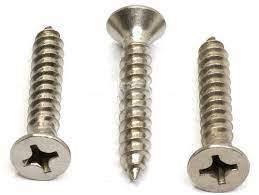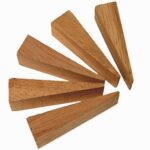A screw is formed when an inclined plane is wrapped around a cylinder. As the inclined plane is wound around the cylinder, ridges – called the thread of the screw – are created. When the screw is inserted into another object through the force of rotation, these threads cut a groove into the other object (or match up with grooves already on the object) to make the two hold together very tightly. The screw mechanism is used in other threaded hardware such as nuts and bolts.

Questions about screws or other threaded hardware assess your knowledge of how the direction of rotation affects the work that must be performed. Below are some key facts that may be useful for answering questions about threaded hardware.
Key Facts
· The turning direction (clockwise or counterclockwise) dictates whether the hold between a screw and other object is tightened or loosened. If being tightened, each consecutive turn or rotation of the screw will move it further into the object and make the hold stronger. If being loosened, each turn or rotation of the screw will move it further out of the object and make the hold weaker.
· Standard threading requires clockwise (right) rotation to tighten and counterclockwise (left) rotation to loosen the hold. The colloquial phrase “righty-tighty, lefty-loosey” can help you remember this rule. However, some screws have a reverse-thread, in which case the opposite would be true. Unless otherwise specified, you should use the rule of standard threading to answer questions.
· The distance between the threads depends on the slope of the inclined plane – the steeper the slope, the wider the thread. Screws with less distance between the threads are easier to turn.

The answer is B. A bolt with standard threading will be drawn into a matching nut when turned to the right (clockwise), but will be pushed apart when turned to the left (counterclockwise). The arrows indicate that the bolt will be turned counterclockwise (left). Hence, if inserted into the end of the nut and turned, it would simply spin around and around without ever threading into the nut.
Solution Pointers for Threaded Hardware questions:
· Determine whether standard threading or reverse threading is being applied.
· Evaluate the direction in which force is being applied.
· If being asked which of two screws will be more easily inserted into an object, determine which has the most distance between threads.


